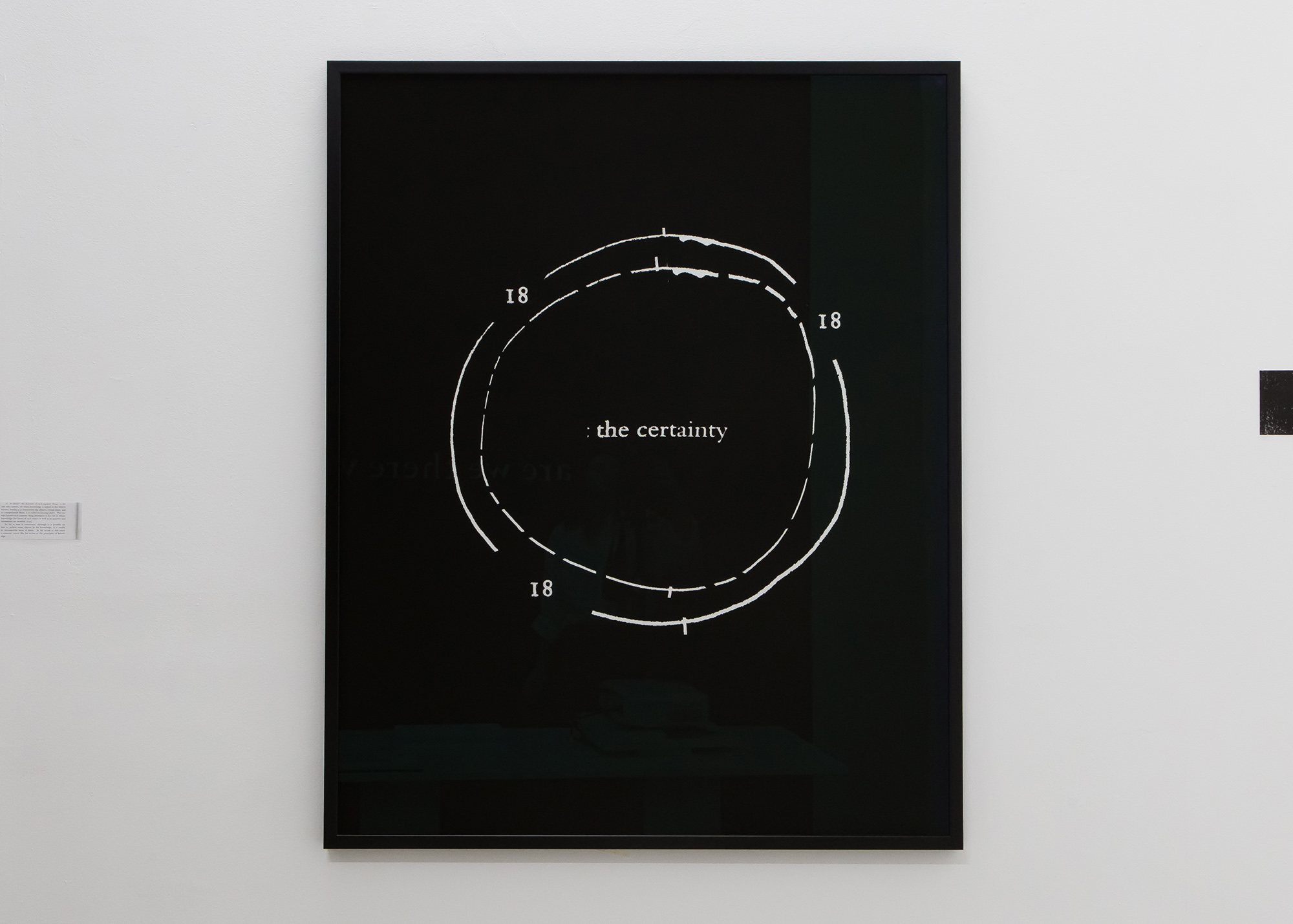Kameelah Janan Rasheed’s evolving series of archival inkjet prints, A Casual Mathematics, articulates racial inequality via the language of number. Measurement, approximation, and their signs and symbols are placed in relation to Black liberation, the ways society has been constructed, and history told. The “awful arithmetic”, in the words of one black-and-white text collage, does not lie. Yet, in the recombinations of phrases, in the leaps between lines, her latest body of work expresses how complex lives cannot be reduced to fixed formulas.
Rasheed works mainly with a Xerox machine, a tool for self-publication and DIY dissemination, to print diagrammatic poems or word-scores that are digitized and reprinted on to vinyl, photo paper, and other surfaces. These provisional prints are then mapped on to the larger score of the installation, where they interpolate viewers in physical space. In the rhythms of Black radical poetics, the walls voice fragments of a politics through the interaction between choice words and their graphic presentation. After Fred Moten’s In the Break, which figures Blackness as “—the extended movement of a specific upheaval, an ongoing irruption that anarranges every line—”, the installation refuses the continuity of the status quo.
Rasheed focuses her work on the materiality and legibility of text, writing, and language, as well as the potential of intermedial translation. Her practice is informed by a multitude of ideas and theories from science, literature, philosophy, religion, and critical theory, between which no epistemological hierarchies exist. The questioning of these and her own embodied knowledge becomes the force that drives Rasheed and her work. In her practice, the Brooklyn-based artist and learner collects references and maps them out like in the layout of a book. She regards letters as characters with histories, desires, and interiority, and integrates these into her writings, annotates them, montages them, and attaches them to walls. By doing so, Rasheed bridges the gap between politics and poetry, trying to find connections and points of disintegration.
